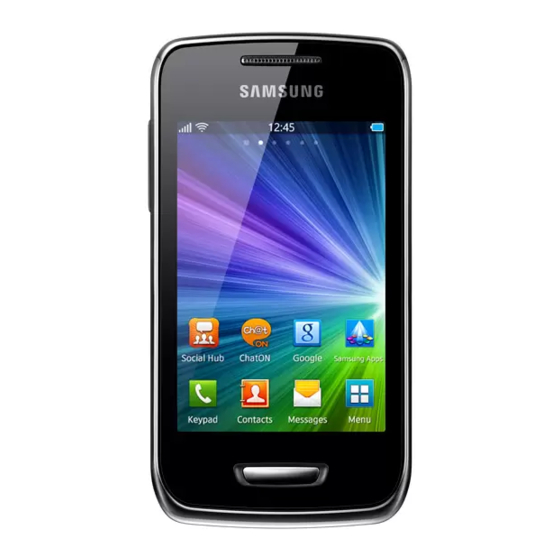Samsung Wave Y GT-S5380D 사용자 설명서 - 페이지 13
{카테고리_이름} Samsung Wave Y GT-S5380D에 대한 사용자 설명서을 온라인으로 검색하거나 PDF를 다운로드하세요. Samsung Wave Y GT-S5380D 37 페이지.

http://www.osha.gov/SLTC/radiofrequencyradiation/index.html
National institute for Occupational Safety and Health (NIOSH):
http://www.cdc.gov/niosh/emfpg.html
World health Organization (WHO):
http://www.who.int/peh-emf/
International Commission on Non-Ionizing Radiation Protection:
http://www.icnirp.de
National Radiation Protection Board (UK):
http://www.nrpb.org.uk
Updated 4/3/2002: US food and Drug Administration
http://www.fda.gov/Radiation-
EmittingProducts/RadiationEmittingProductsandProcedures/HomeBusinessandEntertainment
/CellPhones/default.htm
Road Safety
Your wireless phone gives you the powerful ability to communicate by
voice, almost anywhere, anytime. But an important responsibility
accompanies the benefits of wireless phones, one that every user must
uphold.
When driving a car, driving is your first responsibility. When using your
wireless phone behind the wheel of a car, practice good common sense
and remember the following tips:
1. Get to know your wireless phone and its features, such as speed
dial and redial. If available, these features help you to place your
call without taking your attention off the road.
2. When available, use a hands-free device. If possible, add an
additional layer of convenience and safety to your wireless phone
with one of the many hands free accessories available today.
3. Position your wireless phone within easy reach. Be able to access
your wireless phone without removing your eyes from the road. If
you get an incoming call at an inconvenient time, let your voice
mail answer it for you.
4. Let the person you are speaking with know you are driving; if
necessary, suspend the call in heavy traffic or hazardous weather
conditions. Rain, sleet, snow, ice and even heavy traffic can be
hazardous.
5. Do not take notes or look up phone numbers while driving. Jotting
down a "to do" list or flipping through your address book takes
attention away from your primary responsibility, driving safely.
6. Dial sensibly and assess the traffic; if possible, place calls when
you are not moving or before pulling into traffic. Try to plan calls
when your car will be stationary. If you need to make a call while
moving, dial only a few numbers, check the road and your mirrors,
then continue.
7. Do not engage in stressful or emotional conversations that may be
